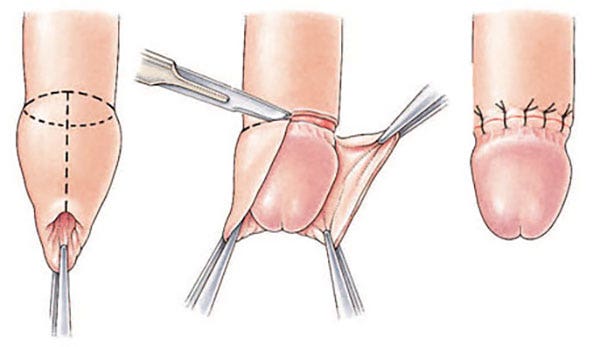The Truth About What *Really* Happens During Infant Circumcision
We had no idea.
 iStock
iStock Having a circumcised penis today is much pretty status quo. It's rare enough for men to have an uncircumcised penis that a quick Google search reveals many women don't even know how to handle an uncircumcised penis.
For some, a circumcised penis is a religious tradition and a necessary and cherished rite of passage. For others, a circumcised penis might not be a religious necessity, but because their father had one and his father had one, it's become a tradition in its own right.
There are staunch advocates against circumcision. But, like everything else, it's a personal choice that you make as a parent or an adult and is completely your own. There are some popular misconceptions about how a penis gets circumcised. I'm here to break down the actual circumcision process with you step by step!
1. Parental consent for circumcision
This is a big one, and an important one for obvious reason. Before the doctors circumcise the penis, they must get the consent of the parents if they child is a minor, and if the patient is an adult, they must sign off and give their consent. During this process the doctors will brief the patient or the patient's parents on what happens during the procedure, any complications that could arise, and instructions for care during the healing process.
2. Preparation for circumcision
The genitals are cleaned with a special surgical cleaner before the procedure.
Note: During adult circumcision, there's a misconception that their pubic hair will be shaved, but that is not necessary for this procedure. Sterile cloths will be placed around the penis.
3. Anesthetizing the genitals
For a long time newborn babies were NOT given anesthesia because it was believed (incorrectly) that newborn's didn't feel pain in their genitals. Thankfully, that's no longer the case. In the case of an infant, the parents decide whether to put their infant under general anesthesia, have their entire genitals anesthetized, or just have a block at the surgical site. An adult patient will make this decision themselves.
4. Separating the glans and the foreskin
The glans and the foreskin are separated to expose the ridge that defines the head of the penis. This is only done to infants, as the glans and foreskin separate naturally over time in adult males.
5. Cleaning up the penis prior to circumcision
Any dead skin cells and their buildup (smegma) are cleared away to make for a clean sterile environment.
6. Replacing the foreskin
The foreskin is returned to its resting position.
7. The removal of the foreskin
The foreskin is cut using scissors on the top side of the penis, a second cut is made on the underside. The skin is then peeled away with scissors using the head's ridge as the guiding line. This second half of the procedure can be done using a variety of different surgical tools, every doctor has their preference.
8. The stitching of the circumcised penis
For some procedures, once the foreskin is removed from the penis, the remaining edges are put back into place, and any blood vessels are tied off. Many infant circumcisions do not include the stitching process.

9. Care for penis after circumcision
For some procedures, dressing covers the circumcised penis to prevent swelling. Typically the foreskin heals fully after 6 weeks.
For adults: Only 1 to 5% of all circumcised men report complications, and even those are things like being displeased with the cosmetic results, pain, and swelling!
